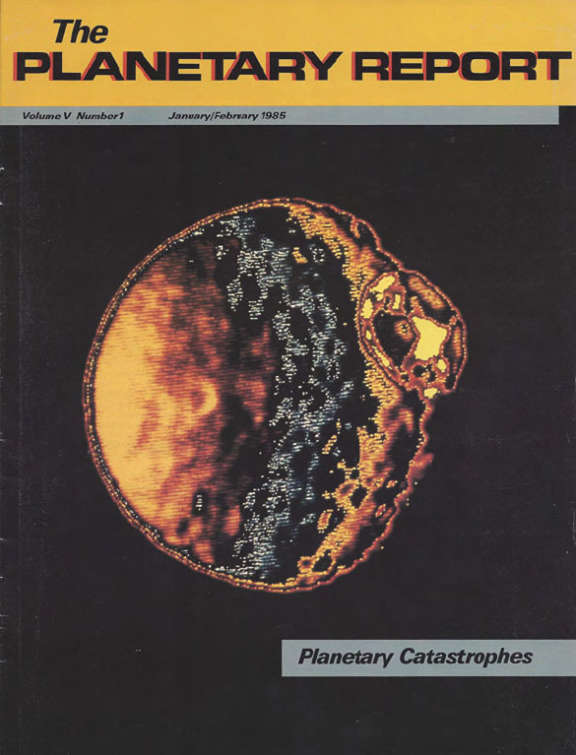The Planetary Report • January/February 1985
Planetary Catastrophes
On the Cover: Sometime in the distant past, an asteroid or comet struck Saturn's moon Mimas with nearly enough force to break the satellite into pieces, leaving a giant crater over 100 kilometers across. Another wayward asteroid or comet may have struck Earth 65 million years ago, causing the extinction of the dinosaurs. This computerized image of Mimas accentuates the crater, appearing here in relief against the darkened limb of the satellite.
Features
3 Planets and Perils: Owen B. Toon takes us on a tour of of catastrophic events in Earth's history.
4 Volcanoes and Atmospheres: Catastrophic Influences on Planets: Susan Werner Kieffer discusses the lessons of volcanic eruptions on Earth and elsewhere in the solar system.
7 A Talk With Eugene Shoemaker: Charlene Anderson sits down with one of the world's experts in impact cratering events to discuss the impact thought to have killed the dinosaurs.
12 Greenhouses and Glaciers: Climate Change and the Continuously Habitable Zone Around the Sun: James F. Kasting looks at the complicated factors of habitability.
16 Precessing Worlds: Planetary Spin and Climatic Stability: William R. Ward explains the effects of a wobbling planet.
20 Intelligence and Catastrophe: The Cosmic Quarantine Hypothesis: Why haven't we discovered any extraterrestrial civilizations? Steven Soter investigates.
Departments
11 News & Reviews Triton and Pluto; Ionian volcanism.
18 World Watch Europe and the U.S. propose joint space ventures.
19 Society Notes Hans Mark rejoins board; New Millennium Committee scholarships.
The Planetary Report • January/February 1985
Help advance space science and exploration! Become a member of The Planetary Society and you'll receive the full PDF and print versions of The Planetary Report.


 Explore Worlds
Explore Worlds Find Life
Find Life Defend Earth
Defend Earth


